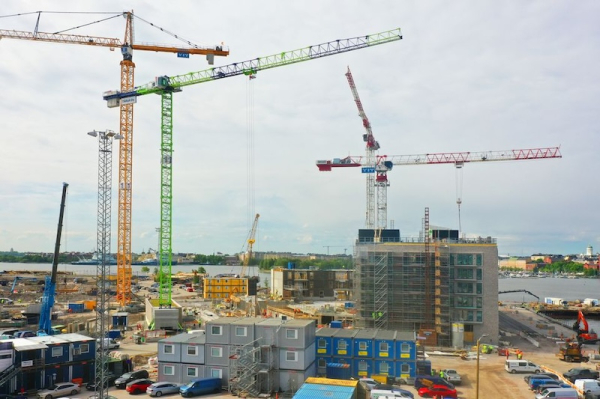Housing construction in Helsinki falls short of targets amid market uncertainty

Difficulties in the operating environment continued to affect housing construction and reduced total output in Helsinki to a lower level than in previous years. Photo: Tero Pajukallio
- Previous Article Training cuts and staff shortages push childcare sector toward crisis
- Next Article Electricity prices set to surge this evening
Helsinki’s housing market and construction output remained well below target levels in 2024, as continued economic uncertainty and low consumer confidence weighed on activity despite falling interest rates and easing inflation.
According to the city’s annual housing review, 4,061 new apartments were completed in Helsinki last year. This is significantly short of the 7,000-unit annual target set by the city’s housing and land use programme (AM programme).
Although the total was lower than in previous peak years, it remained close to the long-term average for the 21st century, which stands at around 4,500 units annually. Housing starts dropped to 2,931 units, and only 3,609 new apartments were granted building permits.
The number of apartments under construction in Helsinki has hovered around 10,000 since 2018 but dropped sharply to 5,700 by the end of 2024. This decline suggests a delayed recovery, with a return to target-level output not expected before the end of the decade.
The subdued environment also extended to the housing sales market. The number of housing transactions remained flat compared to 2023 but well below previous highs.
Key factors slowing down transactions include higher mortgage rates, increased living costs, and a weak economic outlook. Both consumer and investor demand in the capital’s housing market continued to be muted.
Average apartment prices in Helsinki declined by 4.5 percent in 2024. While still in decline, the price drop was less severe than the previous year’s 8 percent fall.
Looking ahead, the city describes the short-term housing outlook as cautiously optimistic. Population growth is expected to sustain demand for housing over the coming years.
A continued drop in interest rates, alongside stronger consumer confidence, could help revive demand. The European Central Bank’s monetary policy will play a central role in determining the pace of recovery.
However, high supply volumes and persistent economic uncertainty may continue to dampen the speed of any rebound.
HT
- Previous Article Training cuts and staff shortages push childcare sector toward crisis
- Next Article Electricity prices set to surge this evening
Source: www.helsinkitimes.fi
